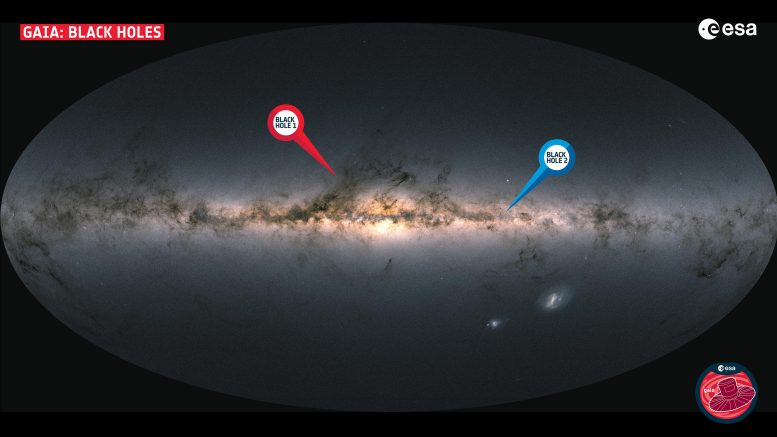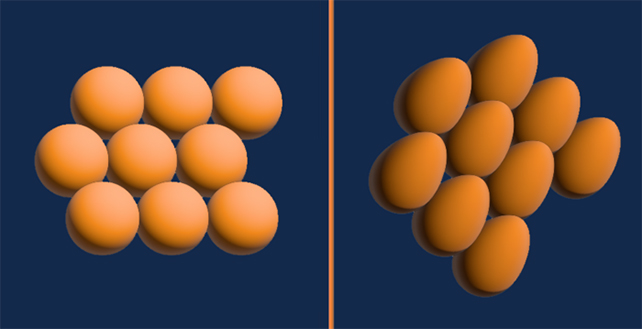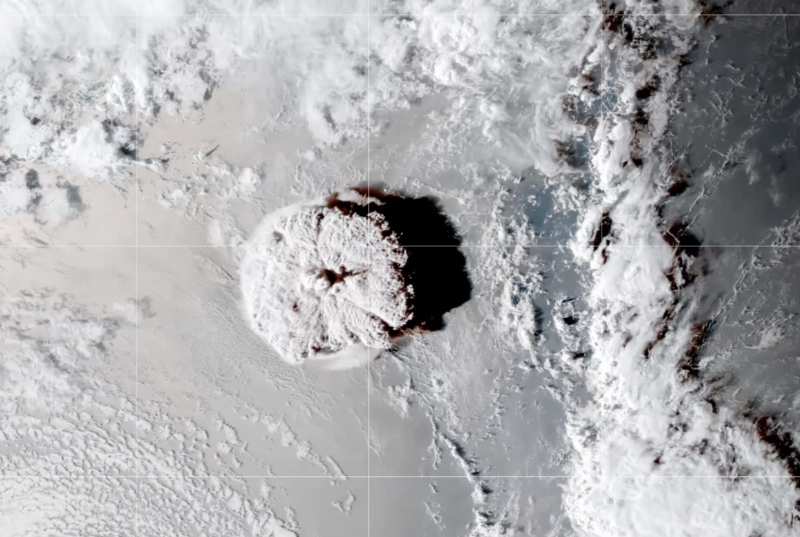
Η θέση των δύο πρώτων μαύρων τρυπών που ανακαλύφθηκαν από την αποστολή Gaia της Ευρωπαϊκής Διαστημικής Υπηρεσίας στον Γαλαξία. Αυτός ο γαλαξίας χαρτογραφήθηκε επίσης από την αποστολή Gaia. Η Μαύρη Τρύπα 1 της Γαίας βρίσκεται μόλις 1.560 έτη φωτός μακριά προς την κατεύθυνση του αστερισμού Οφιούχου και η Μαύρη Τρύπα 2 της Γαίας απέχει 3.800 έτη φωτός στον αστερισμό του Κενταύρου. Με γαλαξιακούς όρους, αυτές οι μαύρες τρύπες βρίσκονται στην κοσμική αυλή. Πίστωση: ESA/Gaia/DPAC; CC BY-SA 3.0 IGO
Η αποστολή Gaia της Ευρωπαϊκής Διαστημικής Υπηρεσίας βοήθησε στην ανακάλυψη ενός νέου τύπου…[{” attribute=””>black hole. The new family already has two members, and both are closer to Earth than any other black hole that we know of.
A team of astronomers studied the orbits of stars tracked by Gaia and noticed that some of them wobbled on the sky, as if they were gravitationally influenced by massive objects. Several telescopes looked for the objects, but no light could be found, leaving only one possibility: black holes.

Gaia is an ambitious mission to chart a three-dimensional map of our Galaxy, the Milky Way, in the process revealing the composition, formation, and evolution of the Galaxy. Credit: ESA–D. Ducros, 2013
New population of black holes
Using data from ESA’s Gaia mission, astronomers have discovered not only the closest but also the second closest black hole to Earth. The black holes, Gaia BH1 and Gaia BH2, are respectively located just 1560 light-years away from us in the direction of the constellation Ophiuchus and 3800 light-years away in the constellation Centaurus. In galactic terms, these black holes reside in our cosmic backyard.
The two black holes were discovered by studying the movement of their companion stars. A strange ‘wobble’ in the movement of the stars on the sky indicated that they are orbiting a very massive object. In both cases, the objects are approximately ten times more massive than our Sun. Other explanations for these massive companions, like double-star systems, were ruled out since they do not seem to emit any light.

The ‘wobble’ of stars on the sky is caused by the gravitational attraction from other stars, exoplanets or black holes. In this image the attracting object is an exoplanet. Credit: ESA
Until recently, all the black holes astronomers knew of were discovered by emission of light – usually at X-ray and radio wavelengths – produced by material falling in. The new black holes are truly black and can only be detected by their gravitational effects. The distance of the stars to the black hole, and the orbits of the stars around them, are much longer than for other known binary systems of black holes and stars. Those closer star-black hole pairs, called X-ray binaries, tend to be very bright in X-ray and radio light, and thus easier to find. But the new discoveries suggest that black holes in wider binaries are more common.
“What sets this new group of black holes apart from the ones we already knew about is their wide separation from their companion stars. These black holes likely have a completely different formation history than X-ray binaries,” explains Kareem El-Badry, discoverer of the new black holes and researcher at the Harvard-Smithsonian Center for Astrophysics in the US and the Max-Planck Institute for Astronomy in Heidelberg, Germany.
Η αποστολή Gaia της ESA βοήθησε στην ανακάλυψη ενός νέου τύπου μαύρης τρύπας. Η νέα οικογένεια αποτελείται ήδη από δύο μέλη, και τα δύο είναι πιο κοντά στη Γη από οποιαδήποτε άλλη μαύρη τρύπα που γνωρίζουμε. Οι μαύρες τρύπες ανακαλύφθηκαν μελετώντας μετρήσεις εξαιρετικά ευκρίνειας των αστρικών θέσεων και κινήσεων στο Gaia Data Edition 3. Μια περίεργη «ταλάντευση» στην κίνηση δύο αστεριών στον ουρανό δείχνει ότι βρίσκονται σε τροχιά γύρω από ένα πολύ τεράστιο αντικείμενο. Και στις δύο περιπτώσεις, τα αντικείμενα είναι περίπου δέκα φορές η μάζα του ήλιου μας. Άλλες εξηγήσεις για αυτούς τους ογκώδεις συντρόφους, όπως τα συστήματα διπλών αστέρων, έχουν αποκλειστεί επειδή δεν φαίνεται να εκπέμπουν φως. Η δεύτερη μαύρη τρύπα της Γαίας, η BH2, βρίσκεται 3.800 έτη φωτός από τη Γη. Είναι ένα δυαδικό σύστημα που αποτελείται από ένα κόκκινο γίγαντα αστέρι και είναι πιθανό να είναι μια μαύρη τρύπα. Σε αυτό το κινούμενο σχέδιο της Gaia BH2, που δημιουργήθηκε στο Gaia Sky, τα τροχιακά έχουν ακριβές μέγεθος, αλλά η διάμετρος της πίσω οπής δεν είναι σε κλίμακα. Πίστωση: ESA/Gaia/DPAC, CC BY-SA 3.0 IGO
κίνηση δισεκατομμυρίων αστεριών
Οι μαύρες τρύπες ανακαλύφθηκαν χρησιμοποιώντας δεδομένα της Γαίας. Η Γαία μετρά με ακρίβεια τις θέσεις και τις κινήσεις δισεκατομμυρίων αστεριών. Η κίνηση των αστεριών ενάντια στον ουρανό μπορεί να δώσει βασικές ενδείξεις για τα αντικείμενα που δρουν βαρυτικά σε αυτά τα αστέρια. Αυτά τα αντικείμενα μπορεί να περιλαμβάνουν και άλλα αστέρια, εξωπλανήτες και μαύρες τρύπες.
“ο[{” attribute=””>accuracy of Gaia’s data was essential for this discovery. The black holes were found by spotting the tiny wobble of its companion star while orbiting around it. No other instrument is capable of such measurements,” says Timo Prusti, ESA’s Gaia project scientist.
Gaia provided accurate measurements of the movement in three directions, but to understand more precisely how the stars moved away and towards us, additional radial velocity measurements were needed. Ground-based observatories provided these for the newly found black holes, and this gave the final clue to conclude that the astronomers had detected black holes.
Invisible black holes
Black holes are often not completely invisible. When material falls onto them, they may emit light in radio and X-ray. For Gaia’s second black hole, NASA’s Chandra X-ray Observatory and the South African MeerKAT radio telescope on the ground looked for this light, but they were not able to spot any signal.
“Even though we detected nothing, this information is incredibly valuable because it tells us a lot about the environment around a black hole. There are a lot of particles coming off the companion star in the form of stellar wind. But because we didn’t see any radio light, that tells us the black hole isn’t a great eater and not many particles are crossing its event horizon. We don’t know why that is, but we want to find out!” says Yvette Cendes who helped discover the second black hole and is an astronomer at the Harvard-Smithsonian Center for Astrophysics in the US.
The new type of black hole does not emit any light, making them practically invisible, probably because they are much further away from their companion stars. Gaia BH1 and Gaia BH2 have the most widely separated orbits of all known black holes. The fact that they are also the closest known black holes to Earth suggests that many more similar black holes in wide binaries are still waiting to be discovered.
“This is very exciting because it now implies that these black holes in wide orbits are actually common in space – more common than binaries where the black hole and star are closer. But the trouble is detecting them. The good news is that Gaia is still taking data, and its next data release (in 2025) will contain many more of these stars with mystery black hole companions in it,” Yvette explains.
Gaia’s next data release will be based on 66 months of observations and will contain improved information on the orbits of stars. In the meantime, astronomers will be busy figuring out where these black holes in wide orbits come from.
Kareem El-Badry points out: “We suspected that there could exist black holes in wider systems, but we were not sure how they would have formed. Their discovery means that we must adapt our theories about the evolution of binary star systems as it is not clear yet how these systems form.”
“Gaia’s Data Processing and Analysis Consortium is developing methods to identify astrometric binaries with compact companions. We expect to provide a good sample of candidates in the next Gaia data release,” says team member Tsevi Mazeh from Tel Aviv University. The scientific community looks forward to further expand this new population of dormant black holes.
On June 13, 2022 Gaia released, for the first time, results from its non-single star processing. The Gaia binary star survey surpasses all the work on binary stars from the past two centuries. These two black holes were found by investigating two of the solutions from this catalog of more than 813,000 binary star systems. Gaia Data Release 4 is expected to further increase the accuracy of binary star solutions, possibly revealing many more exciting candidates for follow-up.
Reference: “A red giant orbiting a black hole” by Kareem El-Badry, Hans-Walter Rix, Yvette Cendes, Antonio C Rodriguez, Charlie Conroy, Eliot Quataert, Keith Hawkins, Eleonora Zari, Melissa Hobson, Katelyn Breivik, Arne Rau, Edo Berger, Sahar Shahaf, Rhys Seeburger, Kevin B Burdge, David W Latham, Lars A Buchhave, Allyson Bieryla, Dolev Bashi, Tsevi Mazeh and Simchon Faigler, 30 March 2023, Monthly Notices of the Royal Astronomical Society.
DOI: 10.1093/mnras/stad799

“Ερασιτέχνης διοργανωτής. Εξαιρετικά ταπεινός web maven. Ειδικός κοινωνικών μέσων Wannabe. Δημιουργός. Thinker.”



